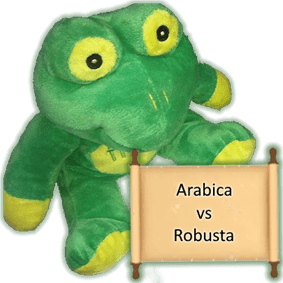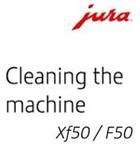What follows is a summary of 2 posts on quality control and assessment of coffee provided by Zane.
Coffee Assessment
To control the quality of roasted coffee you produce a formal assessment process is recommended. There are many ways of assessing coffee, but to start off here are some of the forms commonly used for assessing coffee:
- The SCAA training Cupping form
- Cup of Excellence Cupping Form
- Brewer’s Cup Score Sheet
- WBC Sensory Score Sheet
They all need to require assessment of to say something about these things:
- Smell; beans, grinds and brew
- Taste; brew/drink
- Texture or umami; brew/drink
These are now covered below:
Smell Perception
A smell can be perceived as:
| Definition | Description |
| Fragrance | Is the smell of the dry grinds, specifically the intensity of the fragrance. |
| Aroma | Is the smell directly from the cup and is assessed before swallowing. This we are score as we sniff and break the crust when cupping. |
| The Nose | Of a coffee is the gases it emits as we drink and swallow. Gases are pushed up to the top of the palate as you swallow. This is why we aspirate (slurp) when cupping. Remember coffee is the universal solvent and also dissolves gases. The aeration of coffee through slurping changes the vapour pressure in the coffee and forces many gases that have dissolved to turn back into gases. |
| After-taste | Is an aromatic sensation. You have residue of coffee in your mouth and throat and this residue emits gases minutes after you swallow. The tendency is for heavier molecules to leave more residue. This means there is a tendency for after-taste to include more dry distillation smells and less enzymatic ones. |
Types
Type of smell can be divided into three types:
| Definition | Description |
| Enzymatic | Aromas have survived the roasting process without converting into something else. They smell of the living coffee plant and cherry. |
| Sugar Browning | caramelization stage giving us smells of nuts, caramel and chocolate. |
| Dry Distillation | is burning, most dry distillation aromas to be undesirable, they are either by design or accident. If a roaster seeks to reduce acid levels in coffee this will come at a price. Imagine your coffee tastes very smoky. There is a point in roasting where coffee pops like popcorn. This is called the first crack. If you continue to roast for another minute or two the coffee pops again: the second crack. After this point is reached there is no enzymatic material left and the aromas will be all the product of caramelization and burning. |
Taste:
Which can be divided into:
| Definition | Description |
| Sweet | Sweet refers to the presence of some caramel flavours developed, overall pleasantness and balance achieved by good roasting that is sensitive to the varietal character of the bean. Sweet might also refer simply to a varietal characteristic, also called soft, mild or mellow |
| Acidic or brightness | Seven principal acids found in coffee – 49 listed on the coffee research institute’s web page. Most mention malic acid, while Chlorogenic acid is the most abundant (it represent 7% of a typical dry weight of grinds). There are basically two families of these acids:
|
| Bitter | Typically caused by the Alkaloids in coffee. Alkaloids are a plant’s natural defence against pests. Caffeine is an alkaloid, as is Chlorogenic acid. Chlorogenic acid breaks down into Quinic acid during roasting. Quinine acid is what is found in tonic water. Over roasting causes higher concentrations of Quinic acid |
| Sour | is normally caused by too much Citric Acid in the final roasted product. Roasting plays a role in optimising levels in the cup. In low concentrations, it is a positive sensation, in general, medium roasts contain about half as much citric acid as green beans. Unripe coffee will have higher levels of citric acid. In a fruit, citric acid converts to sugar, so if coffee cherries make it into the washing station unripe (assuming they are washed), you can expect sourness in the cup. The extreme of unripe is visibly blonde in colour and these are referred to as quakers. They are sour and smell of peanut and should be picked out of the final product. Coffee scoring 85% and higher, as per the SCAA scale, should not contain more than one quaker per kg. Another cause of sourness is Acetic acid (most commonly found in vinegar). If beans have fermented or been allowed to dry on the tree then a much larger quantity of a familiar acid is normally found in the bean. This is the fourth most concentrated acid usually found in brewed coffee. There are higher proportions of acetic acid found in washed coffees and very light roasts. It moderate proportions it can add a positive winey taste to coffee but it can certainly taste like ferment and in high concentrations is a fault. Many coffee roasters are tempted to roast darker to evaporate off this acid to reduce sourness. Ideally, a coffees an imbalance of acetic acid is not desired. |
Texture
The texture or feel of coffee is the 5th taste or umami. Some may call it body feel, others finish. MSG is the most well-known stimulant of this sense of taste.
The strength of the body is what we are interested in.
Alkaloids
Alkaloids are a family of (usually) naturally occurring molecules containing nitrogen – includes quinine (in the tonic in G&Ts), ephedrine, morphine and nicotine. Most alkaloids will act as bases (react with acids). Bases are a more general class of chemicals that react with acids to form salts e.g., hydrochloric acid HCl + sodium hydroxide (NaOH, a base) react to form NaCl (table salt) + water.
the above explanation courtesy Dr N Marshall
Further considerations
Further to the trio of Smell, Taste and Texture.
Flavour Taints
A taints wheel allows you to work backwards. You identify a taste, say it’s earthy. Then you locate a similar descriptor on the SCAA (now SCA) flavour wheel. Work inwards and you notice it’s moved towards fats absorbing odours. Towards External Changes. Imagine butter left open in the fridge next to some smoked mackerel also uncovered. Fats tend to absorb odours. Coffee beans can contain up to 17% fat. The only time coffee was likely to be left near soil is on the farm or at the mill. Many farms lack the infrastructure to build raised drying beds or concrete patios so the beans will have been dried on the naked earth.
Tipping
If you pick up a smoky carbon type taste in what appears to be a very light roast. You also determine that beans are not perfectly round. Tipping is when parts of the roasted bean are darker in some places than in others. Even the best roaster cannot prevent some slight unevenness in the roasting of beans as they are marginally different sizes and pointy at the tips. At origin, beans are sieved through screens to help make them a more uniform size, but the screen size is a guide, not a rule.



